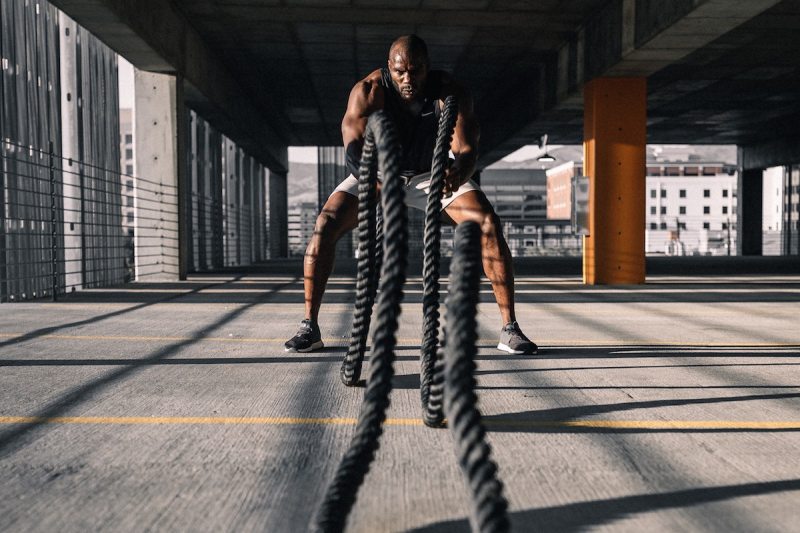
High-intensity interval training, or HIIT, has been enjoying its time in the spotlight for the past several years, surging in popularity as people search for ways to work out more effectively and efficiently. Indeed, where once the prevailing thought surrounding the “best workouts” was “the longer, the better,” many personal trainers and sports conditioning specialists now agree that intensity is key when it comes to maximizing the benefits of exercise, which is where HIIT workouts shine.
This isn’t to say that if you’re a distance runner, endurance athlete, or fan of long-duration, moderate-intensity cardio, you have to abandon your bread-and-butter workouts entirely, but incorporating HIIT workouts into your exercise routine can add numerous benefits and boost your fitness and athletic performance. HIIT workouts may even become your new favorite, as they can be fun and challenging. Ready to get started with HIIT training? Keep reading for the basics of HIIT workouts, the benefits of HIIT workouts, and how to get started with HIIT.

What is HIIT?
High-intensity interval training (HIIT) is a type of workout that involves alternating short bursts of vigorous exercise with less-intense recovery periods. By engaging in these hard-easy cycles, HIIT workouts allow you to work harder during the intense periods and keep your heart rate elevated throughout — even while you rest. HIIT workouts usually last anywhere from 15 to 45 minutes, but there are HIIT styles, such as Tabata, that last just 4 minutes.

Benefits of HIIT workouts
HIIT workouts are certainly no walk in the park, but your hard effort will reward you with plenty of benefits, including the following:
HIIT workouts burn a lot of calories
If you’re looking to burn fat and lose weight, the metabolic benefits of HIIT workouts should be appealing to you. HIIT workouts are efficient, allowing you to torch a lot of calories in a short period of time. The main reason HIIT workouts are efficient in terms of the calories burned is that the intensity level — which is reflected in a fast heart rate — is so high. Moreover, most HIIT exercises are total-body moves that incorporate all major muscle groups, which increases the metabolic demand. Finally, the calorie burn doesn’t cease as soon as you towel off during your post-workout stretch. The bursts of intense work are very demanding for the body, so your metabolism stays revved up for hours to rebuild and recover, helping you burn through more calories even at rest. This “afterburn,” known as Excess Post-Exercise Oxygen Consumption, can help you burn body fat and lose more weight.
HIIT workouts are efficient
Many of us are so busy these days, and with all the responsibilities competing for our time, energy, and attention, working out sometimes gets pushed to the bottom of the to-do list or nixed altogether. HIIT workouts are perfect when you’re running short on time because you can get in an effective full-body workout in just 20-30 minutes. Studies indicate that you’ll reap the same cardiovascular and strength gains through HIIT workouts in one-third to one-half of the time that it would take with traditional continuous training.
HIIT workouts can improve health markers
HIIT workouts can improve markers of health. For example, research has found even just three 20-minute HIIT workouts in the absence of other training modalities can improve blood sugar regulation and reduce blood pressure and resting heart rate.
HIIT workouts can add fun and variety to your routine
One of the best ways to prevent burnout and overuse injuries is to keep your workouts varied and ever-changing. Although challenging, HIIT workouts can be really fun and play-like, with each intense interval feeling like a chance to push your body and gamify your workout. Because you only focus on one hard bout at a time — and desperately count down the seconds until you get to rest — the entire workout usually flies by and feels really engaging. If you don’t love traditional resistance training, HIIT can also be a more exciting application to increase your strength.
Additional benefits of HIIT workouts
HIIT can stimulate muscle growth, particularly in the legs and core, even without traditional weight training. The explosive nature of HIIT exercises improves power output and can enhance performance in various athletic activities. You may also increase your VO2 max, as it helps you get maximum oxygen uptake, which is a key indicator of aerobic fitness and athletic potential.
Doing HIIT workouts can boost your mood and energy levels. Some studies suggest that HIIT can combat stress, improve mood, and increase energy levels due to endorphin release. HIIT may also improve your insulin sensitivity, as regular HIIT workouts can enhance your body’s ability to use insulin, potentially benefiting individuals with type 2 diabetes or prediabetes.

What exercises work well for HIIT?
Theoretically, you can do HIIT with any exercise or modality, as it’s less about what you are doing and more about how you are doing it. That said, exercises that take well to HIIT workouts are total-body exercises that can be strung together with minimal changes in equipment since the periods of rest are usually brief. Though far from an exhaustive list, here are some examples:
- Running/sprinting
- Spinning/cycling
- Rowing
- Stair climbing
- Jumping jacks
- Mountain climbers
- Jump squats
- Burpees
- Pull-ups
- Pushups
- Lunges or squats
- Medicine ball slams
- Battle ropes
- Jumping rope
- Kettlebell swings
- Box jumps
- High knees
- Bear crawls
- Tuck jumps
- Lateral slide board slides

Precautions with HIIT workouts
After discovering the fun, engaging nature of HIIT workouts and seeing noticeable changes in their body composition and fitness, many people quickly fall in love with HIIT workouts and want to do them every day. However, due to the intense nature of this style of training, it’s important to give your body adequate rest between HIIT workouts.
In general, to avoid overtraining and risking injury, it’s not advisable to do more than three to four HIIT workouts per week at max, especially if you’re not varying the modality of exercise. It is also vital to remember that while speed and intensity are key in terms of reaping the benefits of HIIT workouts, intensity should never come at the expense of good form. For this reason, it’s best to choose exercises you can do well without sacrificing your form and putting your body at risk for injury.

How to get started with HIIT workouts
Once you pick an exercise modality or a handful of different exercises, you’re ready to get started with your HIIT workout. Decide on the duration of each hard burst and recovery period. For example, your work intervals and rest intervals may each be 30 seconds, and you’ll just cycle between pushing as hard as you can for the 30 seconds and then recovering for the next 30 seconds, over and over until your desired total time has elapsed. Note that most HIIT workouts last 20-30 minutes, depending on your fitness level and time constraints.
The fitter you are, the longer the hard efforts can be relative to the rest intervals; however, it’s important to keep the intense intervals short enough that you can work at maximal effort and fully reap the metabolic and fitness benefits of HIIT. You should be working at 80% to 95% of your max heart rate during your high-intensity bouts. In general, cap your hard-effort intervals at 45 seconds.
Here are a few sample HIIT workouts:
Beginners:
- 20 minute HIIT workout: 5 minute warm up; 10 x 30 seconds hard, 30 seconds easy; 5 minute cool down.
- 30 minute HIIT workout: 5 minute warm up; 15 x 30 seconds hard, 30 seconds easy; 5 minute cool down.
Intermediate athletes:
- 20 minute HIIT workout: 5 minute warm up; 14 x 30 seconds hard, 15 seconds easy; 5 minute cool down.
- 30 minute HIIT workout: 5 minute warm up; 16 x 45 seconds hard, 30 seconds easy; 5 minute cool down.
Advanced athletes:
- 30 minute HIIT workout: 5 minute warm up; 20 x 45 seconds hard, 15 seconds easy; 5 minute cool down.
Looking for a challenging, total-body workout using just your body weight? Check out this bodyweight circuit workout that you can easily adapt into a HIIT workout.



